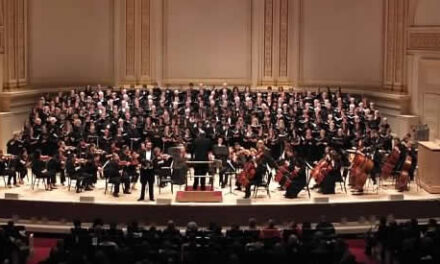EastWind Trio d’Anches Looks East: Reed Trios of Eastern Europe. Mary Ashley Barret, oboe; Kelly Burke, clarinet; and Michael Burns, bassoon. Works by Witold Lutoslawski (1913-1994), Frigyes Hidas (1928-2007), Erwin Schulholf (1894-1942), Antoni Szalowski (1907-1973), Erzsébet Szönyi (b 1924), and Sàndor Varess (1907-1992). Centaur. CRC 2972 (©2009) (73:25) $16.00, available directly from Centaur Records, Inc.
Kelly Burke and her Greensboro, NC-based colleagues have again produced a winning recording of truly rare repertoire that is both delightfully melodic and strongly characterized.
Burke and Mary Ashley Barret are principal players in the Greensboro Symphony and faculty members of the University of North Carolina Greensboro. Fellow faculty member Michael Burns is also principal bassoon of the Asheville Symphony and is associated with many other orchestras within NC. All three play with splendid control of breath, dynamics, and timbre. They blend together beautifully while standing out strongly in appropriate solo portions. The sound of the recording, made at Ovation Sound, Greensboro, is warm, well-balanced, and very natural.
The Trio (1945) of Witold Lutoslawski is one of the few of his early works to survive. It was found well after the great Polish composer’s death and published in 2003. While Lutoslawski’s mature style combined aleatoric textures, fresh tonality related to late Bartók, and elements of chance, his early works reflect the influence of folk music. The outer fast movements are lively and engaging while the slow middle movement exploits the instruments’ lower ranges and is delightfully pungent.
Budapest born Frigyes Hidas was active as music director of the National Theatre (1951-66) and the municipal Operetta Theatre (1974-79). After leaving the latter, he became a prolific free-lance composer. He firmly believed in traditional “singable tunes.” His Oclaba (2007) was commissioned by the EastWind Trio d’Anches and makes use of the auxiliary instruments in the reed trio. This was one of his last compositions and the EastWind gave the world premiere the day after Hilas’ death. It is cast in seven short movements. All are immediately attractive and two, the brief second “Vivace” movement and sixth “Comodo” stood out upon first hearing because of their rich tonal palette.
Czech Erwin Schulhoff is familiar to collectors as one of the more prominent of the composers of “degenerate” music who were blacklisted and murdered by the Nazis in concentration camps. Schulhoff studied with Claude Debussy and Max Reger and was strongly influenced by the style of Leos Janácek. Over the course of his thirty years of composing, Schulhoff’s style changed often. His Divertissement for oboe, clarinet and bassoon (1925) has six short movements and uses elements of jazz and popular dances of the 1920’s such as the “Charleston” and “Florida” used in the aptly titled 4th and 6th movements.
Polish composer Antoni Szalowski, who had studied with Nadia Boulanger at the Paris Conservatory during the 1930’s, managed to hide from the Nazis. Boguslaw Schaffer, in the Grove Music Online biographical entry, describes Szalowski’s music as “easy on the ear, full of Parisian elegance but linked to the emotional and colorful Polish symphonic tradition.” His Trio (1936) is skillfully written and dominated by humor and rhythms.
Erzsébet Szönyi, a Hungarian pianist, choral conductor, lecturer, and composer, also studied Nadia Boulanger as well as Olivier Messiaen at the Paris Conservatory. She is best known for her promotion of Zoltán Kodály’s music education theories. Remember the musical communication scene from the movie Close Encounters of the Third Kind? That entire sequence of musical communication between the government base and the alien spaceship was based upon central aspects of Kodály’s theories. While the titles to her Five Old Dances for Wind Trio (1958) are baroque, the harmonic language is colorfully modern.
Many regard Sandor Veress as the most significant composer of the generation following Bartók and Kodály. His musical style manages to combine Hungarian folk song melodic phrases, elements of counterpoint and Italian vocal polyphony, and a free handling of intervals combining half or whole tones independent of tonality. Veress’ use of rhythm in his Sonatina (1931) is evocative of Bartók.
Most of the composers on this disc were delightful new discoveries and all of the works on this unusual recital will repay repeated listening. The works by Lutoslawski and Schulhoff are welcome additions to their repertoire.











